#Kedarkantha peak
Explore tagged Tumblr posts
Text
Kedarkantha Trek – A Must-Do Winter Experience
If you’re seeking an adventure in the Himalayas, the Kedarkantha trek is your perfect choice. This moderate trek takes you through snowy meadows, pine forests, and scenic villages. The highlight is reaching the summit at 12,500 feet, offering 360-degree views of the Himalayan ranges.
Choose Himalayan Daredevils for a seamless trekking experience with meals, campsites, and guides included. Whether you’re a solo traveler or part of a group, we make every moment special.
Book now and start your Kedarkantha adventure!
#kedarkantha trek#kedarkantha#kedarkantha peak#kedarkantha trekking#kedarkantha peak trek#kedarkantha trek package
0 notes
Text
Book your Kedarkantha Trek package with Himalaya Shelter today and explore the beauty of the Garhwal Himalayas!
#kedarkantha trek#kedarkantha peak#kedarkantha summit#travel#trekking#trip#hiking#trekkers#travelling#trek package#tour package#tourism#uttarakhand#india#uttarakhand trekking
0 notes
Text
A Complete Backpacking Guide for Trekkers: The Kedarkantha Trek
One of the most important holy locations, particularly in Hindu mythology, is Kedarkantha Trek. At the base of the top, there is a revered temple dedicated to Lord Kedarkantha (Shivji), which has endured the test of time. Every year, millions of pilgrims climb mountains to offer their prayers and seek the Hindu Deity's blessings.
At the foot of the Kedarkantha peak, facing the Kedar Parvat, is the actual temple. Kedarkantha is a simple walk that is particularly lovely in the winter. Both avid trekkers and those who love the outdoors frequently find this to be one of the Himalayan region's most outstanding crests to their liking.

About the Kedarkantha Trek
One of those treks allows you to reach the summit even during the bitter winters. A four-day introductory hike across Uttarakhand leads to the frozen Juda ka Talab and snow-covered trails. From the summit of the 12500-foot kedarkantha trekking, the amazing sunrise appears to be in heaven From the summit, one can see a variety of peaks, including Pangarchulla and Har Ki Dun.
Even if you are not a Hindu, you may sense the faith all around you because of the need to find your higher purpose and the belief in faith. It creates the atmosphere for when you begin your ascent.
The large mountain peaks' forested bases, along with pine tree meadows and perhaps even snow caressing the hills, provide a breathtaking backdrop for your group's adventure. Along with the river Tons, which is fed by glaciers, you'll also start to see breathtaking panoramic vistas of notable mountain summits immediately after leaving the base camp.
Sankri Village, the starting point
You must first travel from Delhi to Dehradun by bus, train, aeroplane, or other means of personal transportation. You then proceed to Sankri, where the journey starts. With Juda Ka Talab, the trek from Sankri to the Kedarkantha summit covers a total of about 25 kilometres and takes about 4-5 days.
By road, from Delhi to Sankri
Sankri is a small village located 200 kilometres from Dehradun, kedarkantha trek distance the Rupin Pass, Har Ki Dun Trek, and Kedarkantha Trek begin. Dehradun - Purola - Mori - Naitwar - Sankri is the route from Dehradun to Sankri. On the road, the trip takes about 7 hours.
It's a pretty beautiful path to drive. A night's stay at Sankri village is necessary because it is surrounded by stunning natural scenery. Enjoy the quaint town!
Public Transportation
There are several ways to get to your starting place if you decide to start your walk via public transportation.
Recommended Route for the Kedarkantha Trek
A strategy that allows for some flexibility is the greatest way to enjoy a walk. The Kedarkantha Trek is best completed in 4-5 days and includes some of the most breathtaking scenery and campsites.
Most days, your trip won't last more than 4-5 hours, allowing you plenty of time to unwind, take in the scenery, and develop close relationships with your friends. Of course, if you want to reduce the amount of planning required, I strongly advise purchasing a guide.
You may also need to bring your own camping gear if you are not taking a package excursion. The Kedarkantha Trek, however, is manageable and suitable for beginners. So, dear trekkers, don't worry and move forward one step at a time!
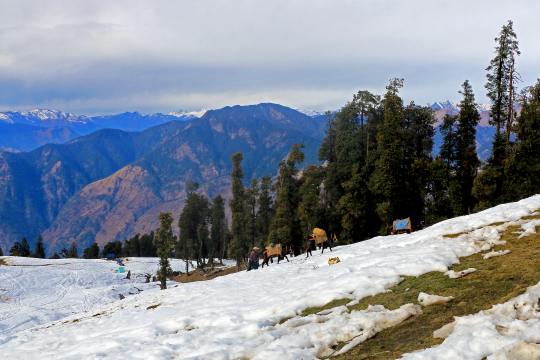
Conclusion
Having completed the Kedarkantha Trek is a magnificent experience. I hope the details above will be useful to you as you organise your travel to Kedarkantha. Have a great trek and stay safe. If you have any further questions concerning this route, please post them in the comments below and we'll do our best to assist you.
Also see our more products-
Laka glacier trek, Friendship peak trek, Bhrigu lake trek, Beas kund trek, Hampta pass trek, Sar pass trek, Kashmir great lakes trek, Everest base camp trek, Rupin pass terk, Roopkund trek, Pangarchulla peak, Valley of flowers trek, Har ki dun trek, Bali Pass Trek, Kasol tosh kheerganga trek, kasol kheerganga trek, Triund trek, kheerganga trek, Triund trek, Chadar trek ladakh, Kuari pass trek, Dayara bugyal trek, Chopta trek, Kedarkantha trek, Brahmatal trek, Kasol trek, Kasol tosh trek,
#kedarkantha trek#kedarkantha trekking#kedarkantha trek package#kedarkantha trek distance#kedarkantha trek cost#kedarkantha trek height#kedarkantha trek route#kedarkantha peak
1 note
·
View note
Text
Trekking, Hiking and Expeditions - Transhimalaya
Trekking, Hiking And Expeditions
Leave a Comment / blog / By sachin
Adventure:
Adventure: “an experience or events that is very unusual, exciting or dengerous. Our journey through the jungle was quite an adventure”
An adventure is an exciting and unusual experience that involves some level of risk, uncertainty, and exploration. It often takes you out of your comfort zone and can be physically, mentally, or emotionally challenging. Adventures are typically characterized by their novelty, thrill, and the opportunity for personal growth. Examples of adventures include activities like rock climbing, skydiving, scuba diving, and exploring new places.
Kuaripass trek, Winter KuariPass, Winter trek Kuaripass, Pangarchulla peak, Pangarchulla Peak trek, Kedarkantha
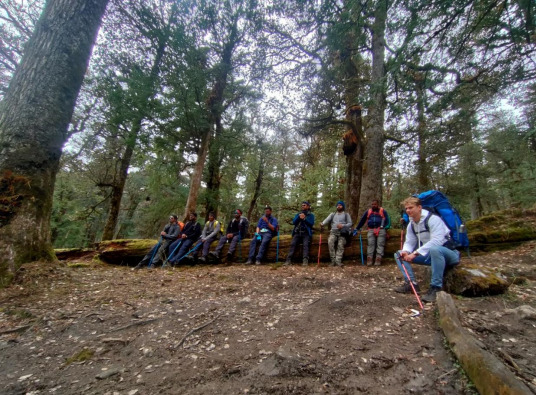
Hiking:
Hiking refers to the activity of walking in natural environments, typically on trails or paths, usually for leisure or exercise. It can range from short, easy walks to more strenuous and challenging hikes in mountainous terrain. Hiking is often done in national parks, forests, and wilderness areas. An example of hiking is taking a leisurely walk through a local nature trail to enjoy the scenery and fresh air.
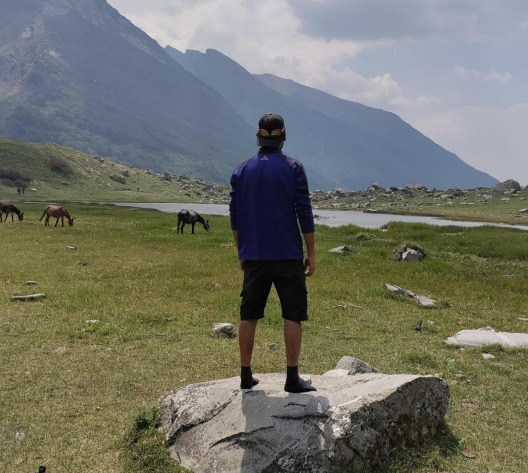
Trekking:
Trekking involves multi-day hikes that usually take you through remote and challenging landscapes. It’s more rigorous than regular hiking and often requires camping overnight. Treks can vary in difficulty and duration, from moderate treks that last a few days to intense expeditions that span weeks. An example of trekking is embarking on a week-long journey through the Himalayas, staying in different camps along the wa
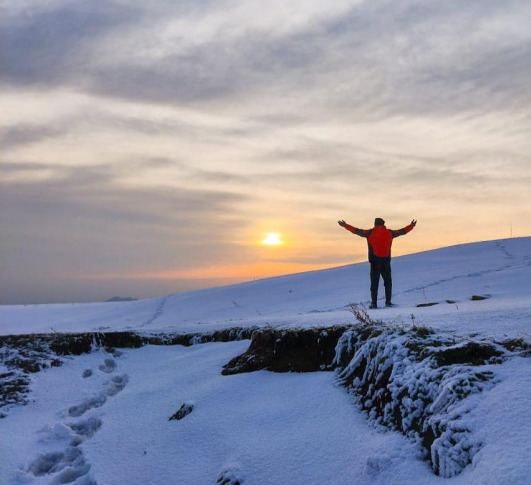
Expedition:
An expedition is a planned journey, often of significant length and complexity, undertaken for a specific purpose such as exploration, research, or adventure. Expeditions involve thorough preparation, organization, and logistics. They can involve activities like mountaineering, polar exploration, or scientific research in remote locations. An example of an expedition is an attempt to reach the summit of an unclimbed peak in a remote part of Antarctica while conducting scientific studies.
Kedarkantha trek, Trans Himalaya, Kag bhusandi trek, Kag bhusandi lake, Satopanth
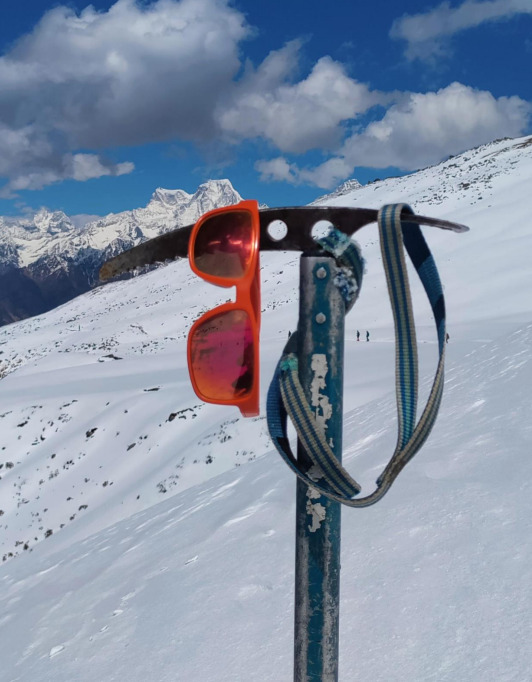
in summary, adventures encompass exciting and unconventional experiences, while hiking involves walking in natural environments. Trekking extends the concept of hiking into longer, multi-day journeys through challenging terrain, and expeditions are meticulously planned journeys often with specific goals or objectives
Satopanth trek, Bagini glacier, Bagini glacier trek, Himalayan trek, Winter trek, Local Tour operator
#Trekking in the himalayas#Kuaripass trek#Winter trek Kuaripass#Kedarkantha trek#Pangarchulla Peak trek
0 notes
Text
Kedarkantha is a popular trekking destination in the Indian state of Uttarakhand. It's known for its scenic beauty and the trek offers stunning views of the Himalayas. The trek usually takes around 6-7 days to complete and is considered moderate in terms of difficulty. It's a great choice if you want to experience the beauty of the Himalayas and can be done in the winter months to enjoy snow-covered landscapes. Make sure to plan your trek well and check for the latest information and permits needed as conditions may change.
#travel#travel destinations#travel life#mountain peak#mountains#travel photography#travel blog#mountain view#kedarkantha trek
0 notes
Text
Kedarkantha Trek: A Mesmerizing Winter Wonderland in the Himalaya
Kedarkantha Trek: A Himalayan Adventure Like No Other
Nestled in the picturesque Garhwal Himalayas of Uttarakhand, India, the Kedarkantha trek is a gem waiting to be discovered. Its pristine snow-covered trails, dense pine forests, and awe-inspiring vistas of majestic Himalayan peaks make it a favorite among trekkers worldwide. Whether you're a beginner taking your first steps into the world of trekking or a seasoned adventurer, Kedarkantha offers an experience that is both challenging and rewarding.
Highlights of the Kedarkantha Trek
Spectacular Views:The Kedarkantha summit stands tall at an altitude of 12,500 feet, offering 360-degree panoramic views of famous Himalayan peaks, including Swargarohini, Bandarpoonch, Black Peak, and Ranglana.
Enchanting Forests:Trek through thick pine forests of the Govind Wildlife Sanctuary, where you'll encounter a rich variety of flora and fauna, adding a magical touch to your journey.
Pristine Snow-Covered Trails:During winter, the trek transforms into a winter wonderland. The snow-laden trails and frozen streams create a surreal and dreamlike setting.
Idyllic Campsites:The trek is dotted with scenic campsites like Juda ka Talab, a serene high-altitude lake surrounded by dense forests and snow-covered meadows.
Cultural Encounters:Explore quaint Himalayan villages and experience the warmth of local hospitality, along with insights into their culture and traditions.

The Trek Itinerary
Day 1: Arrival in Sankri Begin your journey from Dehradun to Sankri, the base camp of the Kedarkantha Trek. The drive itself is a visual treat, with winding roads and lush valleys.
Day 2: Trek from Sankri to Juda ka Talab A gradual ascent through pine forests leads to Juda ka Talab, a tranquil lake surrounded by oak and pine trees.
Day 3: Juda ka Talab to Kedarkantha Base Camp Trek to the base camp with breathtaking views of snow-clad peaks. The campsite offers an excellent vantage point for stargazing.
Day 4: Summit Day The most awaited day of the trek! Start early to catch the sunrise from the Kedarkantha summit. The golden hues of the rising sun illuminating the peaks are truly unforgettable.
Day 5: Descent to Sankri Trek back through scenic trails to Sankri, marking the end of an incredible journey.
Best Time to Visit
While the Kedarkantha Trek is accessible year-round, the winter months (December to April) are particularly popular. During this period, the region is blanketed in snow, creating a magical winter trekking experience.
Who Can Undertake This Trek?
Kedarkantha is considered a beginner-friendly trek, making it ideal for first-timers. However, its moderate difficulty level and high-altitude terrain also appeal to experienced trekkers. A basic level of fitness and stamina is required to tackle the daily ascents and descents.

Essential Tips for Trekkers
Clothing:Carry warm, layered clothing to protect against the freezing temperatures, especially during the summit push.
Footwear:Invest in sturdy trekking shoes with good grip to navigate snowy trails.
Health and Fitness:Prepare with basic cardio and strength training at least a month before the trek.
Permits:Ensure you have the necessary permits, which are usually arranged by trek organizers.
Gear:Carry essentials like a trekking pole, headlamp, insulated water bottle, and energy bars.
Why Choose the Kedarkantha Trek?
Kedarkantha is more than just a trek—it's an opportunity to connect with nature, push your limits, and create lasting memories. Its unmatched beauty, coupled with a sense of accomplishment upon reaching the summit, makes it one of the most sought-after treks in India.
Kedarkantha Trek: A Journey Through Nature’s Wonderland
The Kedarkantha Trek, a serene yet exhilarating journey in the Garhwal Himalayas, is a dream destination for trekkers. Known for its snow-clad trails, breathtaking views of towering Himalayan peaks, and immersive natural beauty, Kedarkantha stands out as one of the most picturesque treks in India. The trek blends adventure with tranquility, offering not just physical challenges but also spiritual rejuvenation amidst pristine wilderness.
A Visual Symphony: The Magic of Kedarkantha
What makes the Kedarkantha Trek unique is its sheer diversity of landscapes. From dense forests of pine and oak to wide open meadows and snowy expanses, every step offers a new visual treat. The quiet serenity of frozen lakes, the crackling of bonfires under a star-studded sky, and the golden sunrise painting the snow-capped peaks—these experiences are etched forever in the hearts of those who undertake this trek.
A Detailed Look at Kedarkantha’s Campsites
Sankri Village:The gateway to the Kedarkantha Trek, Sankri is a charming village perched at an altitude of 6,400 feet. Surrounded by apple orchards and wooden huts, it’s a perfect starting point, offering a glimpse into local Himalayan life.
Juda ka Talab:This serene lake, halfway to the summit, is shrouded in legends and natural beauty. In winter, it often freezes completely, creating a striking contrast with the surrounding snow-laden pine forests.
Kedarkantha Base Camp:Located at 11,250 feet, the base camp offers panoramic views of snow-covered peaks and lush valleys. It’s an ideal spot to rest, acclimatize, and prepare for the thrilling summit climb.
Summit Campsite:For those aiming to experience the grandeur of the summit sunrise, setting up camp closer to the peak can add an extra layer of adventure to the journey.
Seasonal Splendor: Exploring Kedarkantha All Year Round
While Kedarkantha is most famous as a winter trek, it boasts unique charm during other seasons as well:
Spring (March to May): The snow starts to melt, revealing verdant meadows dotted with blooming wildflowers.
Summer (June to August): Ideal for those who prefer milder weather, with lush greenery and vibrant forests.
Autumn (September to November): Clear skies and crisp air make this a fantastic time for photography enthusiasts.
Each season paints the trail with its unique palette, ensuring every visit feels like a new adventure.
The Spiritual Essence of Kedarkantha
Beyond its natural beauty, Kedarkantha carries a deep spiritual significance. According to local legends, the Kedarkantha peak was where Lord Shiva once meditated. The summit is home to a small but revered Shiva shrine, adding a spiritual dimension to the trek. Many trekkers pause here to reflect and connect with the divine energy of the mountains.
Flora and Fauna: Nature at Its Best
Kedarkantha is a part of the Govind Wildlife Sanctuary, a protected area teeming with biodiversity. Trekkers might spot rare Himalayan birds, agile mountain goats, and even traces of leopards. The trek is a paradise for nature lovers, offering a chance to observe the rich ecosystems of the Himalayas up close.
Why Kedarkantha is a Perfect Beginner Trek
Manageable Altitude:With a maximum altitude of 12,500 feet, the Kedarkantha Trek is ideal for beginners, providing a taste of high-altitude trekking without overwhelming difficulty.
Gradual Ascents:The trails are well-marked, with a mix of steep and gradual ascents, making it easier for those new to trekking.
Community Support:Friendly guides and local villagers are always ready to help, ensuring a safe and enriching experience.
Affordable and Accessible:The trek’s affordability and proximity to Dehradun make it accessible to adventure seekers from across the globe.
Key Attractions Along the Trek
Swargarohini Peaks: Known as the stairway to heaven, these peaks dominate the skyline and add a mythical allure.
Frozen Streams and Waterfalls: En route to the summit, trekkers often encounter frozen waterfalls, offering stunning photo opportunities.
Starry Nights: The clear skies at higher altitudes provide an unmatched stargazing experience, perfect for astrophotography enthusiasts.
Sustainable Trekking: Respecting Nature’s Beauty
The growing popularity of Kedarkantha has brought attention to the need for sustainable trekking practices. Visitors are encouraged to follow the principles of Leave No Trace, such as carrying back all waste, avoiding plastic, and respecting the local flora and fauna. Supporting local guides and businesses also contributes to the preservation of this pristine region.
Final Thoughts
The Kedarkantha Trek is more than just a journey through snow-draped trails; it’s a soul-stirring experience that brings you closer to the wonders of nature. From the thrill of conquering the summit to the serene beauty of the forests and lakes, every moment spent on this trek is unforgettable. Whether you’re seeking adventure, peace, or a deeper connection with nature, Kedarkantha delivers an experience that lingers long after you’ve descended the mountain.
Pack your bags, ready your trekking spirit, and step into the enchanting world of Kedarkantha. The Himalayas await your footprints!
Conclusion
Whether you're looking for a serene escape or an adrenaline-filled adventure, the Kedarkantha Trek offers it all. From its snow-draped trails to its stunning summit views, this trek is a testament to the untouched beauty of the Himalayas. So, pack your bags, lace up your trekking boots, and get ready to embark on an adventure of a lifetime!
0 notes
Text
0 notes
Text
Embark on the Kedarkantha Trek: A Scenic Journey from Delhi to Dehradun and Sankri
The Kedarkantha Trek is one of India’s most popular winter treks, known for its pristine snow-covered landscapes, breathtaking views, and moderate difficulty level.
Located in the Uttarkashi district of Uttarakhand, this trek offers an ideal mix of adventure, nature, and tranquility. Starting from Delhi, the journey takes you through Dehradun and the picturesque village of Sankri, which serves as the base camp for the trek. With its enchanting forests, stunning views, and rich cultural experience, the Kedarkantha Trek is an adventure of a lifetime.
Why Choose the Kedarkantha Trek?
The Kedarkantha Trek is popular among trekkers for many reasons. From the snow-capped peaks of the Himalayas to the exhilarating trek through thick pine forests, this adventure offers something for everyone.
1. A Moderate Trek for All Levels
Unlike many other treks that are more suited to experienced trekkers, the Kedarkantha Trek is known for being moderately difficult, making it accessible to beginners and seasoned trekkers alike. Its relatively short duration, which typically spans 4 to 5 days, makes it an ideal trekking option for those looking to experience the Himalayas without a lengthy commitment.
2. Mesmerizing Views and Scenic Beauty
The Kedarkantha Trek is all about the views. The trek offers spectacular panoramas of snow-covered peaks like Swargarohini, Black Peak, Bandarpunch, and the majestic Kedarkantha Peak. The forests, valleys, and lakes that dot the landscape along the route further enhance the trek’s charm.
The Journey Begins: Delhi to Dehradun
The adventure begins with an overnight journey from Delhi, the capital city of India, to Dehradun, the gateway to numerous treks in Uttarakhand. Dehradun is a charming hill station nestled in the foothills of the Himalayas, known for its lush green landscapes and pleasant weather.
1. Delhi to Dehradun: The Road to Adventure
The journey from Delhi to Dehradun is approximately 250 kilometers and takes about 6-7 hours by road. This scenic drive takes you through the lush greenery of the Garhwal region, offering a glimpse of the beauty that awaits you on the trek. Travelers can also choose to take a train or flight to Dehradun, depending on their preference. Once in Dehradun, there’s a chance to explore the local attractions before heading to Sankri.
2. Dehradun: Gateway to the Himalayas
Dehradun is an excellent place to rest and acclimatize before the trek. The town offers a range of attractions, including the Robber’s Cave, Mindrolling Monastery, and the famous Clock Tower. It’s also the place to pick up any last-minute supplies or gear for the trek.
The Scenic Drive to Sankri: The Base of the Trek
From Dehradun, the trek continues to Sankri, a small village that serves as the base camp for the Kedarkantha Trek. Sankri is located around 200 kilometers from Dehradun, and the drive takes you through picturesque hill stations and dense forests, offering stunning views of the surrounding mountains.
1. Dehradun to Sankri: A Beautiful Route
The drive from Dehradun to Sankri takes approximately 7 to 8 hours, passing through the beautiful towns of Mussoorie, Nainbagh, and Purola. Along the way, travelers are treated to views of terraced fields, small villages, and lush green forests, with the towering peaks of the Himalayas in the distance.
Once you arrive at Sankri, you'll be greeted by the serene atmosphere of the village, where your trek to Kedarkantha will begin.
2. Sankri: The Perfect Base Camp
At an elevation of around 6,400 feet, Sankri is a quaint village offering basic accommodation and local food. It’s the perfect place to rest and prepare for the trek ahead. The village is surrounded by dense pine forests and beautiful valleys, giving you a taste of the stunning natural beauty you’ll experience over the next few days.
The Kedarkantha Trek: From Sankri to the Summit
The trek to Kedarkantha Peak takes 4 to 5 days, covering a variety of terrains—from dense forests to snowy meadows and steep ascents to scenic campsites.
1. Sankri to Juda Ka Talab
The first day of the trek takes you from Sankri to Juda Ka Talab, a picturesque lake surrounded by oak and pine forests. The trail is a gentle ascent, passing through lush forests of pine, deodar, and oak. The lake itself is a peaceful spot to camp, and the surrounding beauty makes it one of the most memorable stops on the trek.
2. Juda Ka Talab to Kedarkantha Base Camp
On day two, you continue the trek from Juda Ka Talab to the Kedarkantha Base Camp, located at an altitude of about 10,600 feet. This section of the trek takes you through thick forests, with occasional views of the snow-covered peaks of the Himalayas. The base camp is a beautiful spot to rest, with stunning views of the surrounding mountains and valleys. It’s also the perfect place to prepare for the final push to the summit.
3. Summit Day: Kedarkantha Peak
Summit day is the highlight of the Kedarkantha Trek. The climb to the top of Kedarkantha Peak, standing at 12,500 feet, is the most challenging part of the trek. The trail is steep and snow-covered, but the reward is worth it. From the summit, trekkers are treated to panoramic views of the Swargarohini, Bandarpunch, and Black Peak mountains, as well as the beautiful valleys below. Watching the sunrise from the summit is a truly awe-inspiring experience.
Descent: Kedarkantha to Sankri
After reaching the summit, you begin your descent back to Sankri. The return journey is faster, as you retrace your steps through the same forests and valleys, taking in the beauty of the surroundings one last time. The trek usually takes about two days to return to Sankri.
Best Time to Trek to Kedarkantha
The best time to undertake the Kedarkantha Trek is during the winter months, from December to April, when the region is covered with pristine snow. During this time, the weather is perfect for trekking, and the snow-covered trails add a magical touch to the journey.
Conclusion: A Trek to Remember
The Kedarkantha Trek is a perfect blend of adventure, natural beauty, and cultural experience. Starting from Delhi, passing through Dehradun, and reaching the stunning Sankri village, the journey offers something for everyone—whether it's breathtaking views, challenging climbs, or peaceful moments in nature. With its moderate difficulty level and stunning scenery, this trek is ideal for beginners and seasoned trekkers alike.
Book your Kedarkantha Trek today and get ready for an unforgettable journey through the Himalayas, where every step brings you closer to nature’s wonders
0 notes
Text
Trekking in India is an extraordinary journey through diverse terrains, vibrant cultures
India's trekking routes are a mix of natural beauty and cultural exploration. Trekking here isn't just about scaling heights but also about connecting with the unique traditions of mountain communities. The serene Buddhist monasteries in Ladakh, vibrant tribal festivals in Northeast India, and the picturesque villages in Himachal Pradesh offer insights into the region's history and heritage. Additionally, the hospitality of the locals adds warmth to every trekking expedition.
Top Trekking Regions in India
Each trekking destination in India has its unique charm, offering a range of experiences to nature lovers and adventure enthusiasts.
1. Himalayan Treks

The Himalayas are synonymous with trekking in india, attracting adventurers from across the globe. Famous routes include:
Roopkund Trek (Uttarakhand): Known for its mystery lake filled with ancient human skeletons.
Chadar Trek (Ladakh): A challenging winter trek over the frozen Zanskar River.
Everest Base Camp (Indian Side): Although not as famous as the Nepal route, the Indian trails to the Everest region offer equally mesmerizing views.
2. Western Ghats
The lush green landscapes of the Western Ghats provide a stark contrast to the rugged terrain of the Himalayas. Popular treks include:
Kudremukh Trek (Karnataka): Known for its rolling hills and stunning vistas.
Chembra Peak (Kerala): Features a heart-shaped lake, a romantic spot for trekkers.
Anamudi Peak (Kerala): The highest peak in South India, offering panoramic views of the surrounding valleys.
3. Northeast India
This lesser-explored region is a paradise for those seeking solitude and raw natural beauty.
Dzukou Valley Trek (Nagaland): Famous for its pristine landscapes and blooming lilies.
Sandakphu Trek (West Bengal): Offers panoramic views of four of the five highest peaks in the world, including Kanchenjunga and Everest.
4. Rajasthan Desert Treks
While the idea of trekking in a desert may seem unusual, Rajasthan offers some unique trekking trails through sand dunes and ancient forts. The Aravalli Hills provide a perfect backdrop for short treks, with highlights such as Mount Abu and Kumbhalgarh.
Best Seasons for Trekking
The ideal time for trekking in India varies depending on the region:
Summer (April to June): Perfect for high-altitude treks in the Himalayas like Hampta Pass and Valley of Flowers.
Monsoon (July to September): Trekking in the Western Ghats, such as the Rajmachi Fort trek, becomes a magical experience with cascading waterfalls and lush greenery.
Winter (December to February): Ideal for snow treks in Uttarakhand, like Kedarkantha or Dayara Bugyal.
Preparing for a Trekking Expedition
Whether you're a novice or an experienced trekker, preparation is key to ensuring a safe and enjoyable experience.
Physical Fitness: Trekking demands endurance, so regular exercise, cardio, and strength training are essential.
Gear and Clothing: Invest in good-quality trekking shoes, thermal wear, waterproof jackets, and a sturdy backpack.
Permits and Documentation: Some trekking destinations require prior permits. Make sure to carry valid identification and any necessary approvals.
Local Guides: Hiring local guides can enhance your experience, as they offer invaluable knowledge about the region's history, flora, and fauna.
Challenges and Safety Tips
Trekking in India comes with its challenges, such as unpredictable weather, high altitudes, and limited connectivity in remote areas. Here are some safety tips:
Acclimatize properly to avoid altitude sickness, especially on high-altitude treks.
Carry essential medicines, a first aid kit, and enough food and water.
Inform someone about your trekking plans and expected return date.
Ecotourism and Responsible Trekking
As trekking gains popularity, it's vital to tread responsibly to preserve the environment. Always follow the principles of "trekking in india," which include carrying back all waste, staying on designated trails, and respecting wildlife. Supporting local businesses and communities also promotes sustainable tourism.
The Spiritual Aspect of Trekking
Trekking in India often transcends physical activity, offering a spiritual journey. Routes like the Amarnath Yatra, Kedarnath, and Hemkund Sahib blend adventure with devotion, drawing pilgrims and trekkers alike. The tranquility of these trails allows for introspection and a deeper connection with nature.
Tips for First-Time Trekkers in India
Start Small: Opt for beginner-friendly treks like Triund (Himachal Pradesh) or Har Ki Dun (Uttarakhand).
Join Groups: Traveling in groups can provide motivation and enhance safety.
Pack Smart: Avoid overpacking; focus on essentials like navigation tools, energy bars, and weather-appropriate clothing.
Conclusion
Trekking in India offers a lifetime of memories, blending adventure, natural beauty, and cultural exploration. Whether you're scaling the snow-covered peaks of the Himalayas, wandering through the green valleys of the Western Ghats, or exploring the unique terrains of Northeast India, the experience is bound to leave you enriched and inspired. As you plan your next trek, remember to prepare well, respect the environment, and embrace the journey with an open heart.
0 notes
Text
Trekking Kedarkantha Solo -

When I signed up for JustWravel’s 4-night, 5-day Kedarkantha trek, I didn’t know what to expect as a solo traveler. But as soon as I reached Dehradun and met my group—other solo travelers from places like Delhi, Pune, and Mumbai—it felt like the start of something exciting.
Our journey began with a drive to Sankri, our base camp. Sankri itself is a charming village and a perfect place to start the adventure. The next morning, we set out for Juda Ka Talab, our first campsite, where a beautiful lake surrounded by pine trees made for an incredible view. The best part? Our trek leader, who was both knowledgeable and friendly, shared stories about the area’s geography and culture that really enriched the experience.
On day three, we trekked up to the Kedarkantha base camp, resting up for the summit climb. We set out at 2 a.m., trekking under the stars in the crisp mountain air. By sunrise, we reached the top of Kedarkantha, and the sight of the Himalayan peaks bathed in early light was breathtaking—a moment I’ll never forget.
After soaking in the views, we descended back to Sankri, bonded by the journey we’d shared. Trekking Kedarkantha as a solo traveler was incredible; I made new friends, enjoyed the serene beauty, and felt a real sense of achievement. If you’re looking for a solo adventure with the comfort of a group, I’d definitely recommend the Kedarkantha trek with JustWravel.
0 notes
Text
Kedarkantha Trek 2024 | One Of The Best Trek in Uttarakhand
The Kedarkantha trek is a popular trekking destination located in the Indian state of Uttarakhand, in the western Himalayas. The trek takes you through dense pine and deodar forests, along mountain streams, and past alpine meadows, offering beautiful views of the surrounding peaks.
The trek starts from the small village of Sankri, which is situated at an altitude of about 6,500 feet, and the trekking path passes through several small villages, including Juda Ka Talab and Hargaon, before culminating at the summit of Kedarkantha, which is located at an altitude of 12,500 feet. The trek typically takes between 5-7 days to complete and is considered a moderate to difficult trek, depending on the route and the physical condition of the trekker.

The Kedarkantha trek is a great option for those looking for a challenging yet accessible trek in the Indian Himalayas. The trek starts from the village of Sankri, which can be reached by car or bus from Dehradun or Rishikesh. From Sankri, the trail starts with a steep ascent through dense pine forests, following a mountain stream and passing by several waterfalls. The trail then levels out as it passes through meadows and small villages. The trek offers a good opportunity for wildlife viewing as well as its expected to encounter various species of birds and animals such as Himalayan Monal, Goral, and Musk deer.

1 note
·
View note
Text
Kedarkantha Trek – An Unforgettable Himalayan Journey
Planning a trek to Kedarkantha? Choose from the exclusive Kedarkantha trek packages offered by Himalayan Daredevils. Our packages are curated to meet your preferences, including guided tours, meals, equipment, and campsite arrangements.
Enjoy a 6-day adventure through dense forests, snow-covered trails, and scenic villages. Each day brings new experiences, from bonfire nights to thrilling summit climbs. Whether you are a first-timer or an experienced trekker, Kedarkantha offers something unique for everyone.
Book your trek package today and explore the beauty of the Himalayas!
0 notes
Text
Kedarkantha Trek: A Winter Wonderland Adventure with Himalaya Shelter
Experience the travel magic of Kedarkantha with Himalayan accommodation offering unparalleled trekking in the heart of the Himalayas from picturesque villages Sankari to dense pine forests, tranquil sites and traditional hill villages, all of which ancient snowflakes. Covered in layers, this trek takes you as you climb the 12,500-foot Kedarkantha peak and will be rewarded with breathtaking views of the surrounding mountains like Swarg Rohini, Bandarpoonch and Black Peak.
Kedarkantha Trek is famous for its winter scenery, so it is one of the best times to visit Kedarkantha trek treks between December and April when the route is covered with snow Touted as the best trekking Company in Uttarakhand, Himalayan Refuge offers a smooth and safe travel experience. Their experienced guides take you through a winter wonderland and give you an insight into the local culture and natural beauty. Whether you are an experienced trekker or a novice who wants to experience the Himalayas in winter, the Kedarkantha trek with the Himalayas promises to be a memorable and intoxicating trek hand.
0 notes
Text
Kedarkantha Trek: The Best Winter Trek You Shouldn’t Miss
Winter in the Himalayas isn’t just a season; it’s a magical experience. And when it comes to winter trekking in India, few places can match the beauty, serenity, and adventure of the Kedarkantha Trek. If you're someone who has always dreamt of trekking through snow-covered forests, camping under starry skies, and witnessing some of the most breathtaking mountain views, then Kedarkantha Trekking is your ultimate destination this winter.

Why Kedarkantha Trek Is the Best Winter Trek in India
The Kedarkantha Trek is often hailed as the best winter trek in India, and for good reason. Located in the Garhwal Himalayas of Uttarakhand, this trek offers an unforgettable experience for trekkers of all levels. Whether you’re a first-time trekker or an experienced adventurer, Kedarkantha provides the perfect blend of challenge, beauty, and thrill, making it the ideal winter trek.
A Snowy Paradise When you set foot on the Kedarkantha Trek, you enter a winter wonderland. From December to April, the trail is completely covered in a thick blanket of snow, turning the surrounding forests, streams, and meadows into a postcard-perfect winter landscape. If you’ve ever dreamt of trekking through snow-covered trails, Kedarkantha Trekking is where your dreams come alive.
Perfect for Beginners What sets the Kedarkantha Trek apart from many other high-altitude treks is its accessibility. With a moderate difficulty level, it is one of the best winter treks for beginners and first-time trekkers. The trek takes you through well-defined trails and gradual ascents, making it a comfortable yet exhilarating challenge. This makes Kedarkantha the perfect choice for those new to winter trekking and high-altitude adventures.
Spectacular Views of the Himalayas The highlight of the Kedarkantha Trek is undoubtedly the view from the summit. After trekking through snow-clad forests and reaching the Kedarkantha Peak at 12,500 feet, you’re treated to panoramic views of the surrounding snow-capped giants like Swargarohini, Bandarpunch, and Black Peak. Imagine standing on top of the world, surrounded by the grandeur of the Garhwal Himalayas, with the crisp winter air in your lungs.
Safe and Scenic Trail While winter treks can sometimes be tricky, Kedarkantha Trek is one of the safest and most well-maintained trails in the region. The path is clearly marked, with several campsites at comfortable altitudes, allowing you to acclimatize gradually. As you climb higher, the trail takes you through dense oak and pine forests, frozen lakes, and pristine meadows—making every step worth the effort.
Unforgettable Campsites Winter camping is an integral part of the Kedarkantha experience. From the tranquil Juda Ka Talab lake to the base camp beneath the Kedarkantha Peak, the campsites are surrounded by breathtaking natural beauty. These campsites are perfect for stargazing, enjoying a hot cup of tea by the campfire, and simply soaking in the silence of the winter wilderness.
Best Time to Trek Kedarkantha
The best time for Kedarkantha Trek is from December to April. During these months, the region is covered in a thick layer of snow, making it the perfect destination for winter trekking. While December and January offer the most snow, the trek remains accessible and beautiful well into April. However, the temperatures can dip as low as -10°C during the night, so it’s essential to pack the right gear for your winter adventure.
What Makes Kedarkantha Trek So Special?
Stunning Winter Landscape: Walk through snow-covered meadows, frozen streams, and snow-draped pine forests. Every step of the way is a sight to behold.
Beginner-Friendly: If you're new to trekking or winter adventures, Kedarkantha Trekking is a great way to start. The gradual ascent and manageable difficulty level make it an ideal choice.
Incredible Views: Once you reach the summit, the 360-degree views of snow-capped peaks are simply mesmerizing. No matter how many times you’ve seen mountain views, nothing compares to this.
Well-Maintained Trails: Safety and convenience are key, and Kedarkantha Trek offers just that. The trail is well-marked and maintained, ensuring a smooth and safe trek.
Accessible from Dehradun: The trek is just a 10-hour drive from Dehradun, making it an easily accessible destination for trekkers from all parts of India.
What to Expect Along the Trail
As you embark on the Kedarkantha Trek, you’ll pass through quaint mountain villages, dense forests, and snowy meadows. The sounds of nature—birds chirping, the crunch of snow beneath your boots, and the occasional wind rustling through the trees—will be your constant companions. The campfires at night, the star-filled sky, and the camaraderie of fellow trekkers will all make this journey even more memorable.
The trek will lead you to some of the most beautiful campsites, like Juda Ka Talab and Kedarkantha Base Camp, where you’ll sleep under the clear, starry skies of the Himalayas. On the summit day, the pre-dawn climb will reward you with golden views of the surrounding peaks, a sight that will stay etched in your memory forever.
Packing for the Kedarkantha Trek
Packing for a winter trek requires a bit of extra preparation. Here’s a quick checklist for what to bring:
Warm Clothing: Layers are key! Pack thermal wear, a waterproof jacket, woolen socks, gloves, and a woolen cap.
Trekking Boots: Waterproof, insulated trekking boots are essential for handling snow and icy conditions.
Sleeping Bag: A good-quality sleeping bag designed for sub-zero temperatures is a must.
Other Essentials: Trekking poles, a headlamp, sunscreen, a water bottle, and snacks will ensure you’re well-prepared for the journey.
Trek the Himalayas and Experience Kedarkantha
At Trek The Himalayas, we believe in providing you with an authentic, safe, and enriching trekking experience. The Kedarkantha Trek offers just that—an opportunity to explore the wonders of the Himalayas in winter, challenge yourself, and create memories that will last a lifetime.
If you’ve been thinking about experiencing the magic of the Kedarkantha Trek, there’s no better time than now. Join us for an unforgettable adventure, and discover why the Kedarkantha Trek is one of the best winter treks in India.
#adventure#winter trek#trek the himalayas#adventure travel#best winter trek#trekking#kedarkantha trek
0 notes
Text
Trekking, Hiking and Expeditions - Transhimalaya
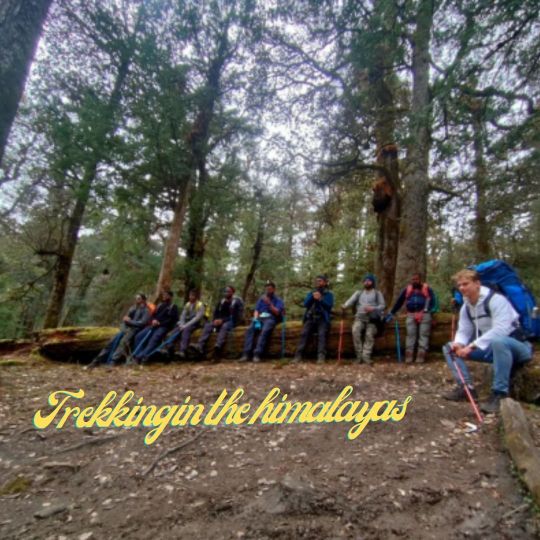
Adventure:
Adventure: “an experience or events that is very unusual, exciting or dengerous. Our journey through the jungle was quite an adventure”
An adventure is an exciting and unusual experience that involves some level of risk, uncertainty, and exploration. It often takes you out of your comfort zone and can be physically, mentally, or emotionally challenging. Adventures are typically characterized by their novelty, thrill, and the opportunity for personal growth. Examples of adventures include activities like rock climbing, skydiving, scuba diving, and exploring new places.
Kuaripass trek, Winter KuariPass, Winter trek Kuaripass, Pangarchulla peak, Pangarchulla Peak trek, Kedarkantha
Hiking:
Hiking refers to the activity of walking in natural environments, typically on trails or paths, usually for leisure or exercise. It can range from short, easy walks to more strenuous and challenging hikes in mountainous terrain. Hiking is often done in national parks, forests, and wilderness areas. An example of hiking is taking a leisurely walk through a local nature trail to enjoy the scenery and fresh air.
Trekking:
Trekking involves multi-day hikes that usually take you through remote and challenging landscapes. It’s more rigorous than regular hiking and often requires camping overnight. Treks can vary in difficulty and duration, from moderate treks that last a few days to intense expeditions that span weeks. An example of trekking is embarking on a week-long journey through the Himalayas, staying in different camps along the wa
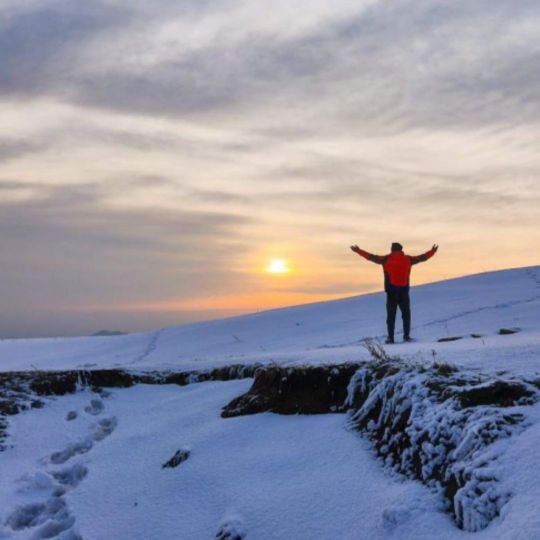
Expedition:
An expedition is a planned journey, often of significant length and complexity, undertaken for a specific purpose such as exploration, research, or adventure. Expeditions involve thorough preparation, organization, and logistics. They can involve activities like mountaineering, polar exploration, or scientific research in remote locations. An example of an expedition is an attempt to reach the summit of an unclimbed peak in a remote part of Antarctica while conducting scientific studies.
Kedarkantha trek, Trans Himalaya, Kag bhusandi trek, Kag bhusandi lake, Satopanth
in summary, adventures encompass exciting and unconventional experiences, while hiking involves walking in natural environments. Trekking extends the concept of hiking into longer, multi-day journeys through challenging terrain, and expeditions are meticulously planned journeys often with specific goals or objectives
Satopanth trek, Bagini glacier, Bagini glacier trek, Himalayan trek, Winter trek, Local Tour operator
#Trekking in the himalayas#Kuaripass trek#Winter trek Kuaripass#Kedarkantha trek#Pangarchulla Peak trek
0 notes
Text
Kedarkantha trek is a popular trekking destination in the Indian state of Uttarakhand. It's known for its scenic beauty and relatively easy trekking conditions, making it suitable for both beginners and experienced trekkers. The trek usually starts from Sankri and takes you through forests, meadows, and offers stunning views of the Himalayan peaks, including the Kedarkantha peak. It's a great choice if you're looking for a winter trek, as the region gets covered in snow during the winter months. Just ensure you're well-prepared for the cold weather and have the necessary gear.
#travel#travel blog#travel destinations#travel life#travel photography#mountain peak#mountain view#mountains#kedarkantha trek
0 notes